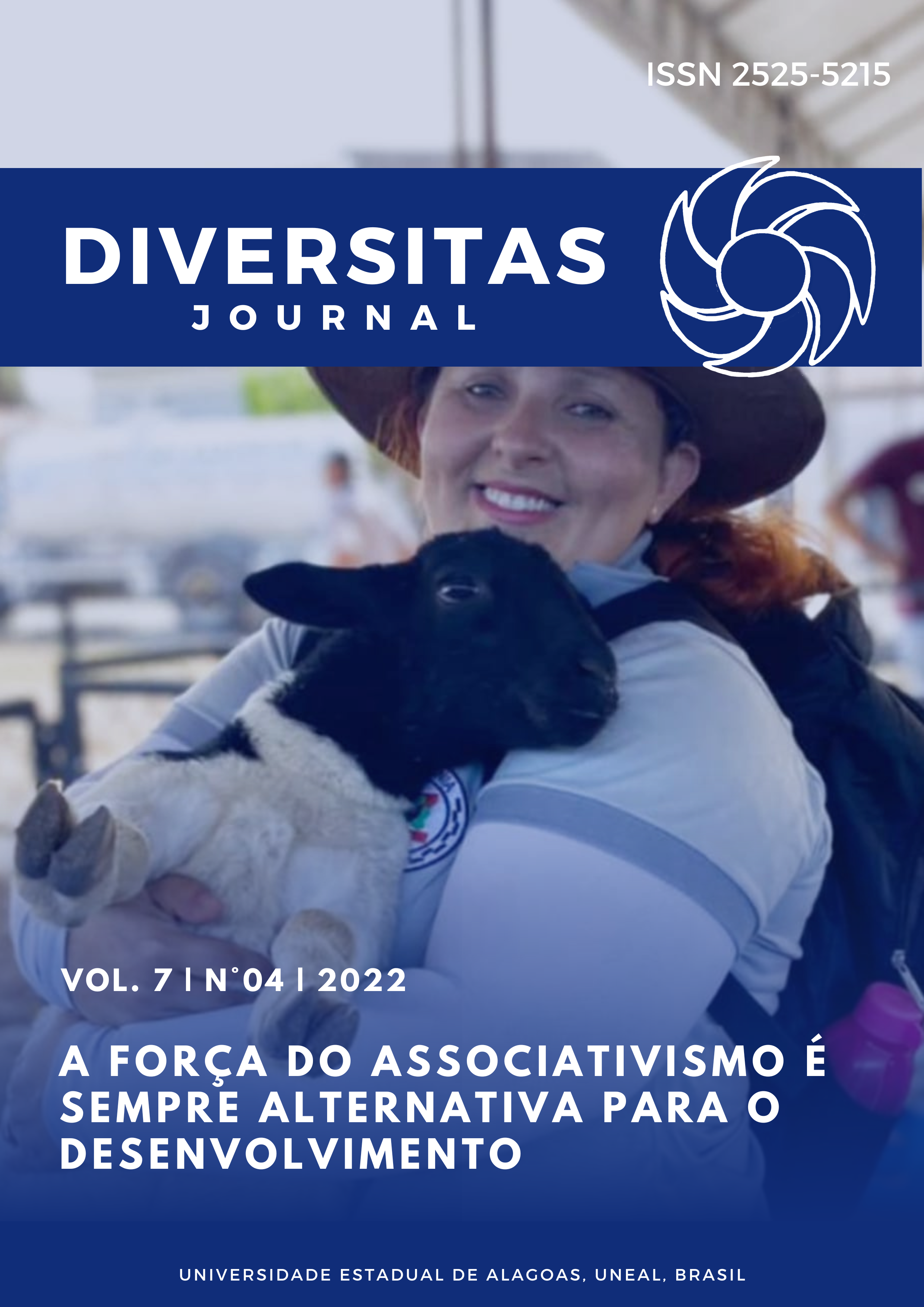Local perception, knowledge and use of unconventional food plants for human populations in Brazil: A systematic review
DOI:
https://doi.org/10.48017/dj.v7i4.2091Keywords:
Perception, Knowledge, Unconventional Food PlantAbstract
The food diversity provided by plants, offers food alternatives for different communities in different regions of Brazil. In this context, Unconventional Food Plant arise, the UFP, which are plants, or part of them, with great food potential, but which are not used by the general population. The UFP have great ecological and economic importance in different contexts. However, people's perception of these resources is not general. Because of this, this work sought, through a systematic review, to analyze ethnobotanical studies with thematic related to the, identify UFP which and where populations that use UFP are found, and extract other general information from these studies, such as their objectives and types of methodology used. The Atlantic Forest vegetation was the ecosystem whose resource extraction was most relevant, with 51%. Rural communities were the most addressed in the studies, with 56% representativeness in this regard. The Asteraceae family was the most represented botanical family in the articles, with 16%. However, Xanthosoma sagittifolium Schott., popularly known as taioba, was the most cited species among all others.
References
Balick, M. J.; Cox, P. A. (1997). Plants, people and culture. Scientific American Library.
Barbieri, R. L., Gomes, J. C. C., Alercia, A. & Padulosi, S. (2014). Agricultural Biodiversity in Southern Brazil: Integrating Efforts for Conservation and Use of Neglected and Underutilized Species. Sustainability, (6), 741-757.
Biomas brasileiros. (2021). IBGE EDUCA. https://educa.ibge.gov.br/jovens/conheca-o-brasil/territorio/18307-biomas-brasileiros.html.
Dong, H., Ma, Y., Wu, H., Jiang, W., Ma, X. (2019). Germination of Solanum nigrum L. (Black Nightshade) in response to different abiotic factors. SBCPD, (38).
FAO. (1992). Productos forestales no madereros; possibilidades futuras. Estudio FAO Montes.
Jacob, M. C. M., Medeiros, M. A., Albuquerque, U. P. (2020). Biodiverse food plants in the semiarid regionof Brazil have unknown potential: A systematic review. PLoS ONE, 15(5).
Kinupp, V. F. (2019, julho). Plantas Alimentícias Não-Convencionais (PANCs): uma Riqueza Negligenciada. Anais da 61ª Reunião Anual da SBPC - Manaus, AM. J.
Kinupp, V. F., Lorenzi, H. (2014). Plantas Alimentícias Não Convencionais (PANC) no Brasil: guia de identificação, aspectos nutricionais e receitas ilustradas. Instituto Plantarum de Estudos da Flora.
Mcalvey, A. C., Chelsey G. A., Janelle B., Linda B. E., Samantha B., Natalia H., Leigh J., Tania E. M-C., Mark N., Meredith A. P., Walderes C. P. de A., Jane A., Zemede A., Israel T. B., Eréndira J. C-C., Simon H., Maui H., Ana H. L., Guillaume O., ... Ina V. (2021). Ethnobiology Phase VI: Decolonizing Institutions, Projects, and Scholarship. Journal of Ethnobiology, 40(2), 107-121.
Molina M., Tardío J., Aceituno-Mata L., Morales, R., Reyes-García, V., Pardo-de-Santayana, M. (2014). Weeds and food diversity: Natural yield assessment and future alternatives for traditionally consumed wild vegetables. Journal of Ethnobiology, 4(1), 44-47.
Nascimento, V. T, Lucena, R. F. P, Maciel, M. I. S, Albuquerque, U. P. (20121). Knowledge and Use of Wild Food Plants in Areas of Dry Seasonal Forests in Brazil, Ecology of Food and Nutrition, 52(4), 317-343.
Nunes, E. N., Guerra, N. M., Arévalo-Marín, N., Alves, C. A. B., Nascimento, V. T. do., Cruz, D. D., Ladio, A. H., Silva, S. de M., Oliveira, R. S. & Lucena, R. F. P. (2018). Conhecimento botânico local de plantas alimentícias nativas no semiárido do Brasil. Journal of ethnobiology and ethnomedicine, 4(49), p.20.
Onwueme, I. C. (1978). The tropical tuber crops. John Wiley & Sons. Chinchester.
Pilla, M. A. C., Amorozo, M. C. M., Furlan, A. (2006). Obtenção e uso das plantas medicinais no distrito de Martim Francisco, Município de Mogi-Mirim, SP, Brasil. Acta Botanica Brasilica, 20(4), 789-802.
Rapoport, E. H.; Sanz, E. H.; Ladio, A. H. (2001). Plantas Silvestres comestibles de la Patagonia Argentino – Chilena. Exóticas/ Parte II. Programa de Extensão Universitária, Departamento Ecologia, Centro Regional Universitário Bariloche, Universidad Nacional del Comahue, Bariloche. p. 77. 2001.
Rapoport, O. H., Margutti, L, S., Sanz, E. H. (1997). Plantas Silvestres Comestibles de la Patagonia Andina. Exoticas/ parte I. Programa de Extensión Universitária, Departamento de Ecologia, Centro Regional Universitário Bariloche, Universidad deL Comahue. p. 44.
Reddy K. N., Pattanaik C., Reddy C, S., Chintala, S. R., Raju, V. (2007). Traditional knowledge on wild food plants in Andhra Pradesh. Indian Journal of Traditional Knowledge, 6, p.223-229.
Sefa-Dedeh, S., Agyir-Sackey, E. K. (2002). Starch structure and some properties of cocoyam (Xanthosoma sagittifolium and Colocasia esculenta) starch and raphides. Food Chemistry, (79), p.435–444.
Shaheen, S., Ahmad, M., Haroon, N. (2017). Edible Wild Plants: An alternative approach to food security. Springer, p.183.
Tardío, J., M. Santayana, P. D., Morales, R. (2006). Ethnobotanical review of wild edible plants in Spain. Botanical Journal of the Linnean Society, 152, p.27-71.
Voggesser, G. (2013). Cultural impacts to tribes from climate change influences on forests. Climatic change, 120(3), p.615-26.
Zeashan, H. A., Amresh, G., Singh, S., Rao, C. V. (2008). Atividade hepatoprotetora de Amaranthus spinosus em animais experimentais. Journal Food and Chemical Toxicology, 46(11), p.3417-3421.
Additional Files
Published
How to Cite
Issue
Section
License
Copyright (c) 2022 Kaique Caetano Silva

This work is licensed under a Creative Commons Attribution 4.0 International License.
The Diversitas Journal expresses that the articles are the sole responsibility of the Authors, who are familiar with Brazilian and international legislation.
Articles are peer-reviewed and care should be taken to warn of the possible incidence of plagiarism. However, plagiarism is an indisputable action by the authors.
The violation of copyright is a crime, provided for in article 184 of the Brazilian Penal Code: “Art. 184 Violating copyright and related rights: Penalty - detention, from 3 (three) months to 1 (one) year, or fine. § 1 If the violation consists of total or partial reproduction, for the purpose of direct or indirect profit, by any means or process, of intellectual work, interpretation, performance or phonogram, without the express authorization of the author, the performer, the producer , as the case may be, or whoever represents them: Penalty - imprisonment, from 2 (two) to 4 (four) years, and a fine. ”


















